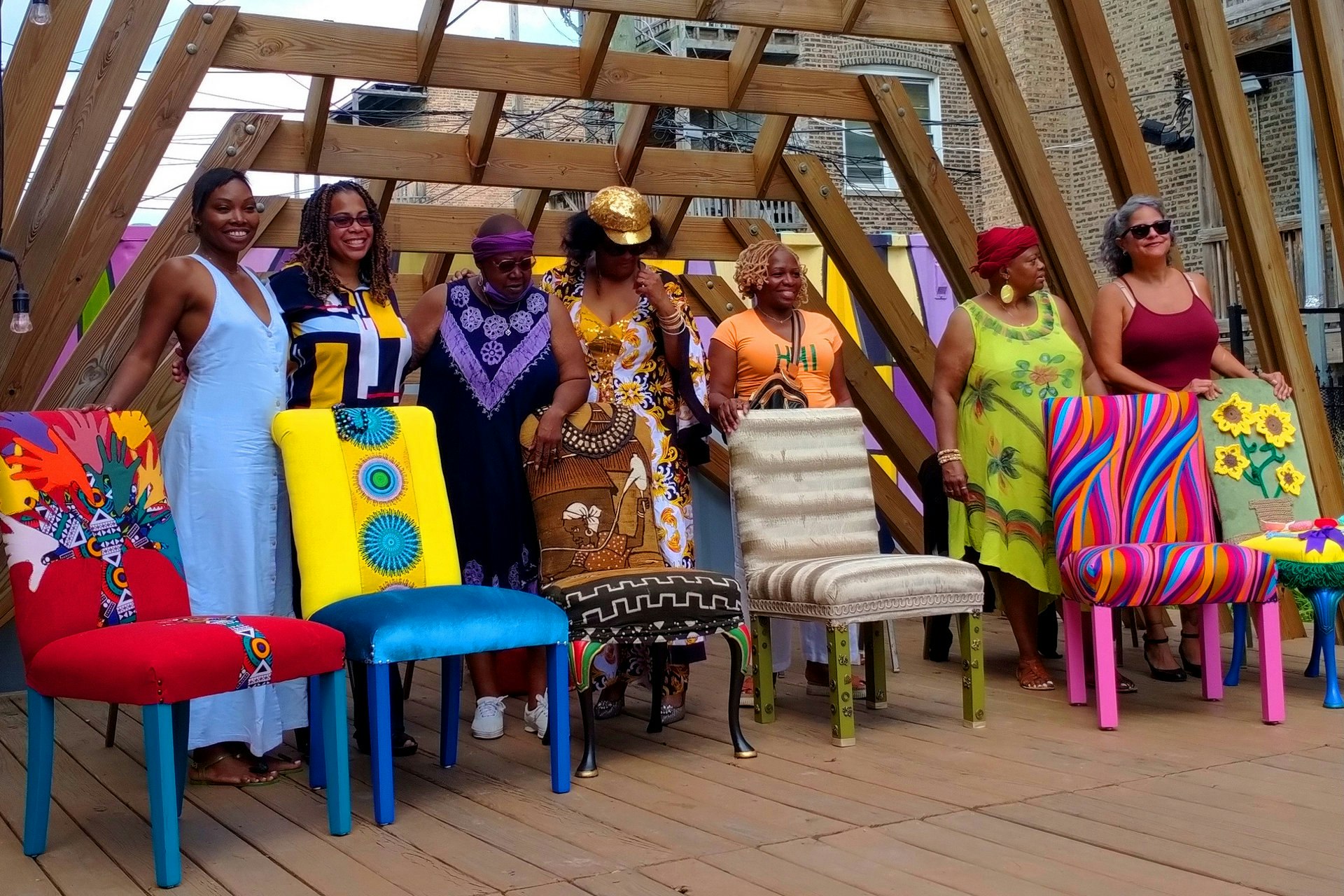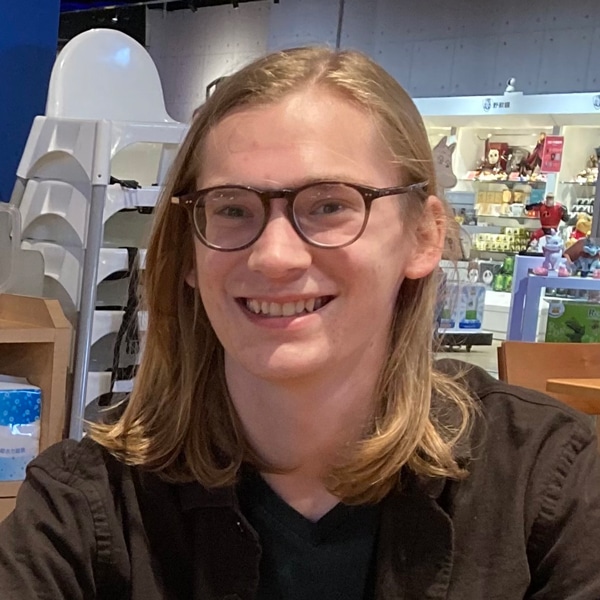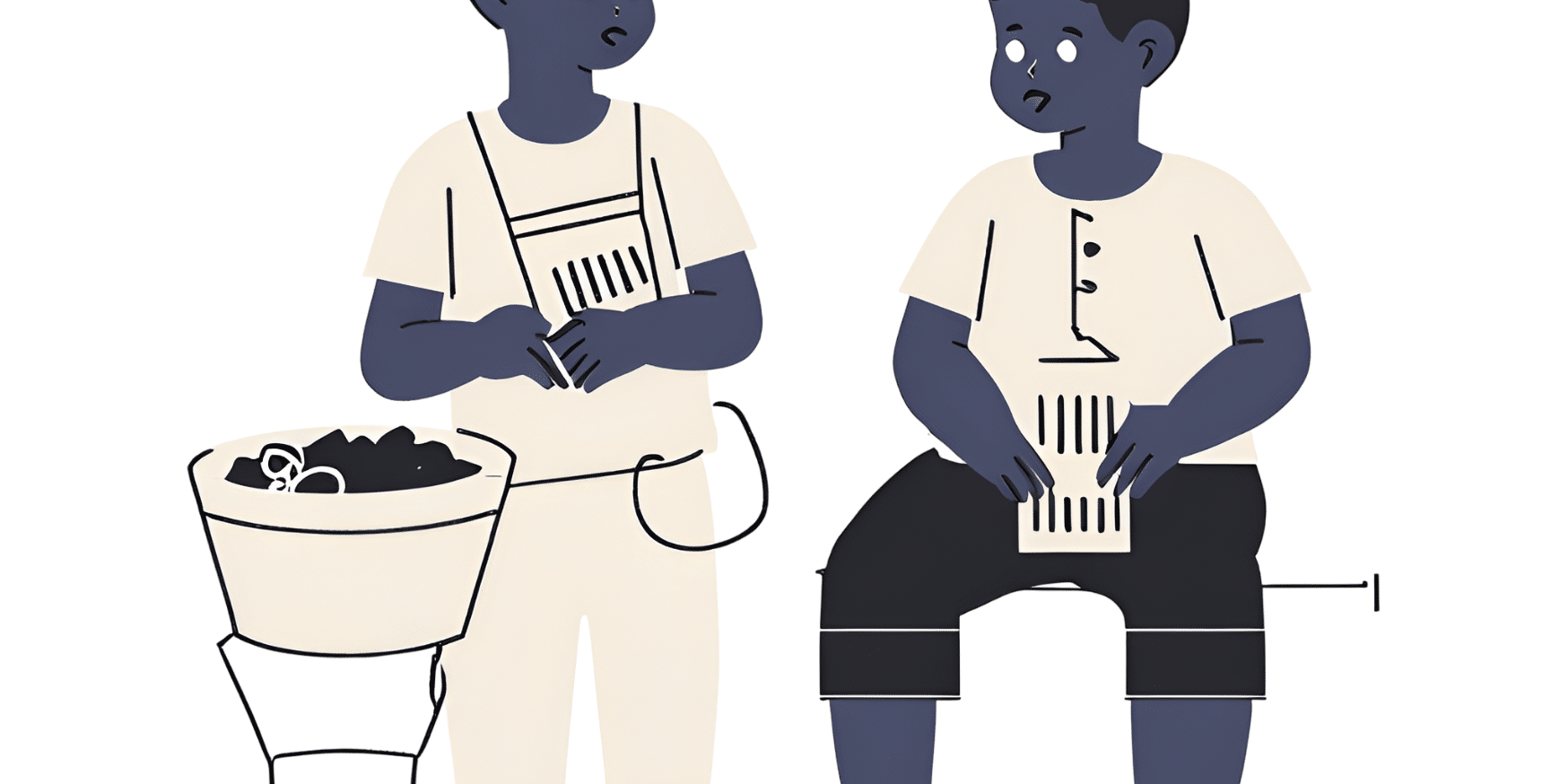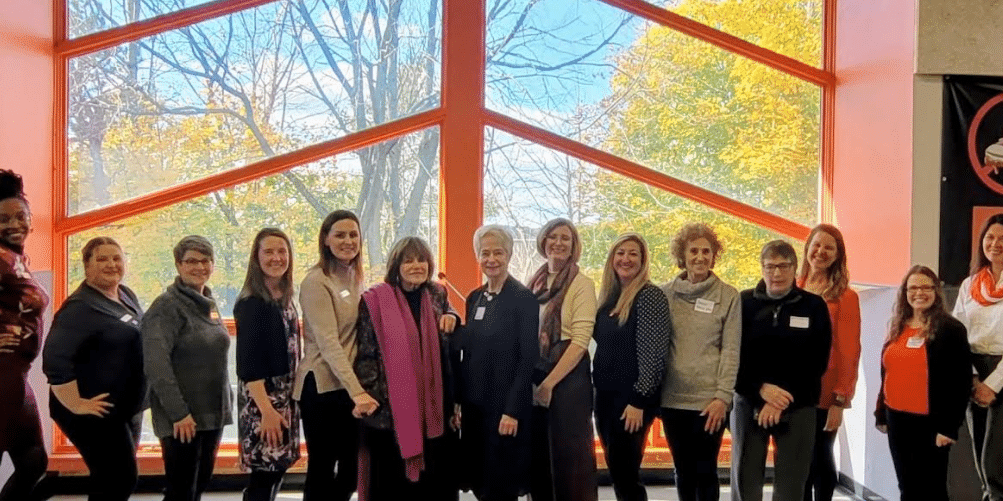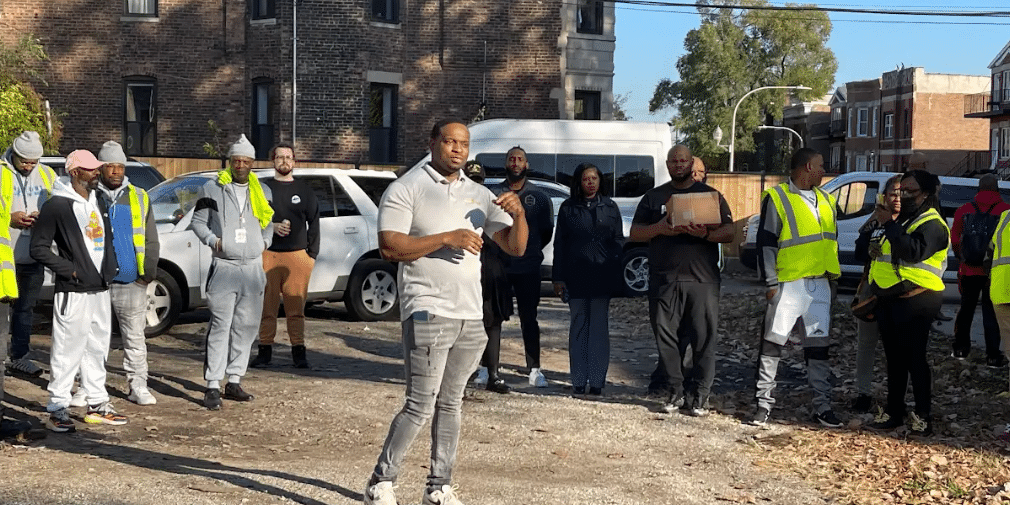Throughout the history of the Goldin Institute, many Peace Fellows have used art as a way to bring communities together, reflect, and create. Jamika Smith, a 2022 Chicago Peace Fellow and the founder of Teena’s Legacy, uses a unique medium to promote these kinds of practices, teaching the art of upholstery as a tool for healing and community activism. Recently, Jamika has worked on two substantial projects, collaborating with community members from the Black and Latino community to use re-upholstery as a tool to explore their history and facilitate healing.
Chairs that Explore Black History: Blooming Out of Trauma
For Black History Month, Teena’s Legacy hosted their very first art exhibit, “Blooming Out of Trauma: The Intersection of Upholstery and Activist Art.” The exhibit was hosted at the Marshall J. Gardner Center for the Arts in Gary, Indiana from February 2 through March 8. For this exhibit, Jamika worked collaboratively with community artists to create fourteen works that trace a peoples’ history from the African Empire and slave trade, through Jim Crow and Civil rights eras, to contemporary experiences. Speaking to the collaborative nature of the exhibit, Jamika stated: “I intentionally wanted this to be a collaborative project, so I [brought in] a couple of artists from Chicago, an artist from Hammond, Indiana, and a majority of artists from Gary.”
Blooming Out of Trauma aimed to capture both the struggles and achievements of African and Black History. Speaking to her inspiration for the exhibit, Jamika said: “A lot of my chairs, especially when I do my workshops, are more about purpose driven pieces, designed with intention. This exhibit is what that is, I intentionally designed an exhibit to tell the story of African and Black history using some authentic cloth from Ghana and Mali. The story starts from the birth of slavery in the 1400s all the way up to the present day. The name ‘Blooming out of Trauma’ captures that for well over 400 years there were traumas and struggles, yet there were also triumphs out of those.” Through working with African materials and reflecting on African and Black history, the artists who contributed to Blooming Out of Trauma created chairs that provide a space to process that history.
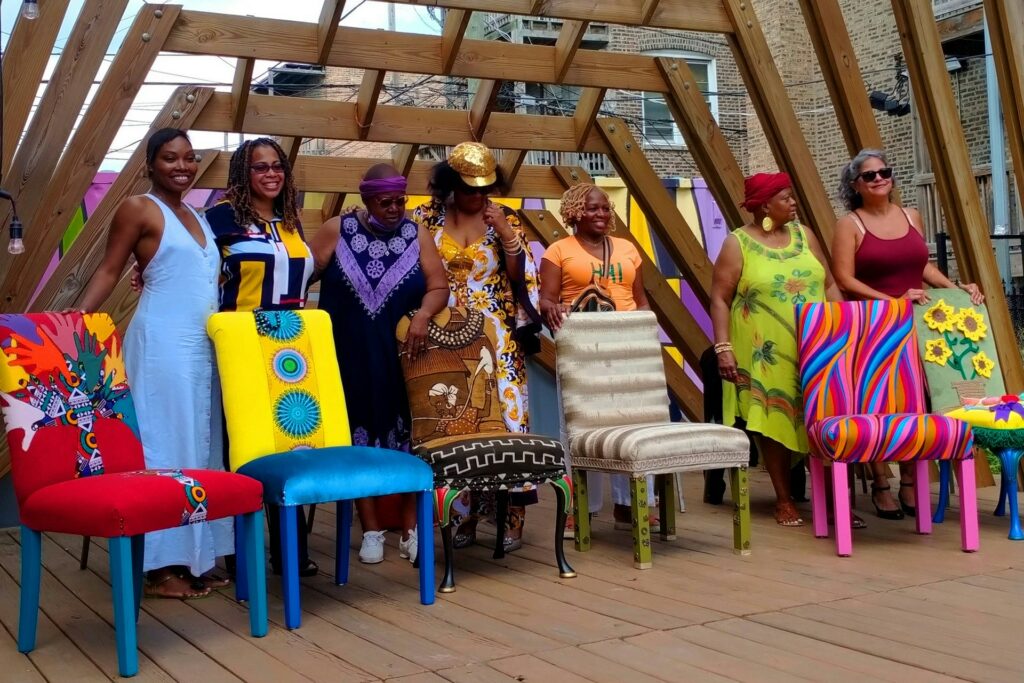
As Jamika and the other artists worked on chairs for Blooming Out of Trauma, they also processed their own personal histories. Jamika elaborates, “I learned more about my history through this project, especially the history that is not taught in schools or books. Even history that our ancestors or family members may have been uncomfortable or ashamed to tell. That history is hidden.” Continuing to reflect, Jamika stated that upholstery teaches: “First, to have patience to assess that there is trauma, and then second to identify and put a name to that trauma, and third, how do you compartmentalize or release that trauma; how do you put it in its proper place.” Through reflecting on personal histories and struggles, Blooming Out of Trauma seeks to allow a space for trauma to be processed.
The way Jamika approaches upholstery centers the experience of individuals and upholstery’s role in connecting groups of people through their experiences. Speaking to the collaborative nature of her work, she says, “It is so much better doing stuff with other people and not solo. You get to learn so much more about individuals’ personalities, passions, desires. When it comes to art, you also learn about their struggles and challenges when it comes to monetizing their art and how challenging it can be to connect their art to the mainstream.” For Jamika, upholstery is a reflective process: “Upholstery can be tedious work, especially since you work with your hands, so students tend to get frustrated through the process, just to come out of the process with a better understanding of who they are as individuals. If you’re impatient with this chair, where else are you impatient? Are you impatient with your health, finances, etc.” Through the process of upholstery, individuals come to a greater understanding of themselves, their history, and their community that can be shared through works of art.
Exploring Assets in the Latino Community: A Seat at the Table
Jamika has also partnered with the Illinois Legislative Latino Caucus Foundation, where she worked with 17 artists from community areas represented by members of the Illinois Legislative Latino Caucus to create chairs representing their community areas on a project called “A Seat at the Table.”. For this project, Jamika joined with Dr. Patricia Novick, a 2023 Goldin Global Fellow, who guided the artists through an Asset Based Community Development training, while Jamika hosted workshops walking the artists through the process of designing and creating a chair that tells the story of their district. Afterwards, the chairs were auctioned at the ILLCF’s annual gala, where $1 million was ultimately raised for their scholarship program.
Artists in the workshop came from multiple generations and represented multiple community areas, but came together to imagine ways in which their communities could be represented through chairs. Jamika emphasized the way the artists were able to join together as a community: “17 artists went into the workshop without really knowing each other that well. And it was an intergenerational group from 16 years old to 65. […] The idea was that even though they did not know each other, they all came into this one space as if they were family.“ Each artist was also allowed their own voice and aimed to capture something about their community. Jamika continued: “Each Chair had a foundation of community, but it was told in 17 different ways. That was the most powerful part about it: it was about community, building, and collaboration, but each one of them had their own separate voice in displaying what it meant for them.”

The artists who worked on a Seat at the Table aimed to showcase a variety of Latino experiences that depict a rich culture. Madison Cervantes, created a chair representing the first senate district and notes: “The butterflies I put on my chair represent all of the immigrants within the 1st district. I wanted to use different materials for their symbolic meaning. Latinos, we are everywhere and we know how to use many different materials and we venture out and I just wanted to represent that we are not linear people.” Silvia Morales created a chair for the 23rd congressional district that incorporates items from vendors in her community: “I wanted to include a lot of aspects of our community as hard workers, but also as people, people who need to rest.” Through reflecting on these chairs, both the artists and community members are asked not only to think of the Latino community, but also assets within that community that can be used to build strength.
This year, Jakima hopes to launch another project similar to A Seat at the Table and collaborate with organizations across Chicago. She imagines creating Peace Circles, identifying topics, and addressing current issues to guide upholstery workshops. As seen through both Blooming Out of Trauma and A Seat at the Table, these workshops would provide spaces for artists to work with their communities to explore their histories, identities, and assets.
